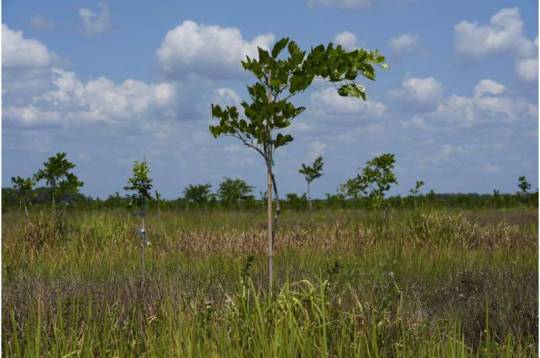#kazakhstan import data
Text
https://www.eximpedia.app

Eximpedia is your premier Import Export data provider, offering comprehensive and real-time insights into global trade trends. Gain a competitive edge with our extensive database, empowering businesses with accurate information for informed decision-making in the dynamic world of international commerce.
0 notes
Text
Kazakhstan Customs data
Exim Trade Data is the most prominent global import-export data provider in the world. They are providing authorized Kazakhstan Customs data which is beneficial for your import-export business in Kazakhstan. You can also access the Global Customs sample data by just clicking the below link - https://eximtradedata.com/kazakhstan-import-export-data

#kazakhstan customs data#kazakhstan shipment data 2021#kazakhstan trade data 2021#kazakhstan imports by country#kazakhstan exports by country#kazakhstan import data#importer of kazakhstan#kazakhstan export data#exporter of kazakhstan
0 notes
Text
Kazakhstan, a pivotal hub in Central Asia, offers abundant prospects for global businesses seeking market expansion. This guide utilizes export, trade, and customs data to help you select the ideal Kazakhstan importer for thriving in this dynamic market. Explore the blog "How to Choose the Right Kazakhstan Importers for Your Needs?" Now.
#global trade data#export#import#international trade#trade data#trade market#global market#import data#import export data#custom data#kazakhstan importers#kazakhstan customs data#kazakhstan export data#kazakhstan import export data#kazakhstan trade data#kazakhstan#global business
0 notes
Text

kazakhstan importers , kazakhstan shipment data play a pivotal role in the country's dynamic economy, fostering international trade and diversity in products. With a focus on sectors like energy, machinery, and consumer goods, these importers contribute significantly to Kazakhstan's economic growth. They navigate global markets, seeking quality products and innovative solutions to meet local demands. Kazakhstan's strategic geographic location as a bridge between Europe and Asia enhances the importance of its importers. Collaborating with diverse suppliers worldwide, these importers drive innovation and bring a broad range of goods to the Kazakh market, fostering economic development and ensuring a steady flow of goods for consumers.
#export#import#import data#export data#trade data#global trade data#kazakhstan shipment data#kazakhstan importers#kazakhstan#Import Export Insights#Kazakhstan Trade Analysis#Business Growth In Kazakhstan
0 notes
Text
Israeli tanks, jets and bulldozers bombarding Gaza and razing homes in the occupied West Bank are being fueled by a growing number of countries signed up to the genocide and Geneva conventions, new research suggests, which legal experts warn could make them complicit in serious crimes against the Palestinian people.
Four tankers of American jet fuel primarily used for military aircraft have been shipped to Israel since the start of its aerial bombardment of Gaza in October.
Three shipments departed from Texas after the landmark international court of justice (ICJ) ruling on 26 January ordered Israel to prevent genocidal acts in Gaza. The ruling reminded states that under the genocide convention they have a “common interest to ensure the prevention, suppression and punishment of genocide”.
Overall, almost 80% of the jet fuel, diesel and other refined petroleum products supplied to Israel by the US over the past nine months was shipped after the January ruling, according to the new research commissioned by the non-profit Oil Change International and shared exclusively with the Guardian.
Researchers analyzed shipping logs, satellite images and other open-source industry data to track 65 oil and fuel shipments to Israel between 21 October last year and 12 July.
It suggests a handful of countries – Azerbaijan, Kazakhstan, Gabon, Nigeria, Brazil and most recently the Republic of the Congo and Italy – have supplied 4.1m tons of crude oil to Israel, with almost half shipped since the ICJ ruling. An estimated two-thirds of crude came from investor-owned and private oil companies, according to the research, which is refined by Israel for domestic, industrial and military use.
Israel relies heavily on crude oil and refined petroleum imports to run its large fleet of fighter jets, tanks and other military vehicles and operations, as well as the bulldozers implicated in clearing Palestinian homes and olive groves to make way for unlawful Israeli settlements.
In response to the new findings, UN and other international law experts called for an energy embargo to prevent further human rights violations against the Palestinian people – and an investigation into any oil and fuels shipped to Israel that have been used to aid acts of alleged genocide and other serious international crimes.
“After the 26 January ICJ ruling, states cannot claim they did not know what they were risking to partake in,” said Francesca Albanese, the UN special rapporteur on the occupied Palestinian territory, adding that under international law, states have obligations to prevent genocide and respect and ensure respect for the Geneva conventions.[...]
“In the case of the US jet-fuel shipments, there are serious grounds to believe that there is a breach of the genocide convention for failure to prevent and disavowal of the ICJ January ruling and provisional measures,” said Albanese. “Other countries supplying oil and other fuels absolutely also warrant further investigation.”
In early August, a tanker delivered an estimated 300,000 barrels of US jet fuel to Israel after being unable to dock in Spain or Gibraltar amid mounting protests and warnings from international legal experts. Days later, more than 50 groups wrote to the Greek government calling for a war-crimes investigation after satellite images showed the vessel in Greek waters.
Last week, the US released $3.5bn to Israel to spend on US-made weapons and military equipment, despite reports from UN human rights experts and other independent investigations that Israeli forces are violating international law in Gaza and the occupied West Bank. A day later, the US approved a further $20bn in weapons sales, including 50 fighter jets, tank ammunition and tactical vehicles.
The sale and transfer of jet fuel – and arms – “increase the ability of Israel, the occupying power, to commit serious violations”, according to the UN human rights council resolution in March.
The US is the biggest supplier of fuel and weapons to Israel. Its policy was unchanged by the ICJ ruling, according to the White House.
“The case for the US’s complicity in genocide is very strong,” aid Dr Shahd Hammouri, lecturer in international law at the University of Kent and the author of Shipments of Death. “It’s providing material support, without which the genocide and other illegalities are not possible. The question of complicity for the other countries will rely on assessment of how substantial their material support has been.”[...]
A spokesperson for the Brazilian president’s office said oil and fuel trades were carried out directly by the private sector according to market rules: “Although the government’s stance on Israel’s current military action in Gaza is well known, Brazil’s traditional position on sanctions is to not apply or support them unilaterally.
Azerbaijan, the largest supplier of crude to Israel since October, will host the 29th UN climate summit in November, followed by Brazil in 2025.[...]
The Biden administration did not respond to requests for comment, nor did Vice-President Kamala Harris’s presidential election campaign team.
Israel is a small country with a relatively large army and air force. It has no operational cross-border fossil fuel pipelines, and relies heavily on maritime imports.[...]
The new data suggests:
•Half the crude oil in this period came from Azerbaijan (28%) and Kazakhstan (22%). Azeri crude is delivered via the Baku-Tbilisi-Ceyhan (BTC) pipeline, majority-owned and operated by BP. The crude oil is loaded on to tankers at the Turkish port of Ceyhan for delivery to Israel. Turkey recently submitted a formal bid to join South Africa’s genocide case against Israel at the ICJ.
•African countries supplied 37% of the total crude, with 22% coming from Gabon, 9% from Nigeria and 6% from the Republic of the Congo.
•In Europe, companies in Italy, Greece and Albania appear to have supplied refined petroleum products to Israel since the ICJ ruling. Last month, Israel also received crude from Italy – a major oil importer. A spokesperson said the Italian government had “no information” about the recent shipments.
•Cyprus provided transshipment services to tankers supplying crude oil from Gabon, Nigeria, and Kazakhstan.[...]
Just six major international fossil-fuel companies – BP, Chevron, Eni, ExxonMobil, Shell and TotalEnergies – could be linked to 35% of the crude oil supplied to Israel since October, the OCI analysis suggests. This is based on direct stakes in oilfields supplying Israeli and/or the companies’ shares in production nationally.[...]
Last week, Colombia suspended coal exports to Israel “to prevent and stop acts of genocide against the Palestinian people”, according to the decree signed by President Gustavo Petro. Petro wrote on X: “With Colombian coal they make bombs to kill the children of Palestine.”
20 Aug 24
202 notes
·
View notes
Text
Good News - July 1-7
Like these weekly compilations? Tip me at $Kaybarr1735! And if you tip me and give me a way to contact you, at the end of the month I'll send you a link to all of the articles I found but didn't use each week!
1. Footage reveals 'miracle eagle chick' in flight

“In an unprecedented display of extended eagle parenting, the two white-tailed parents skipped this year's breeding season to continue to tend to their year-old offspring. The youngster's wing was broken when the nest fell to the ground during unseasonably wild weather last year. […] The fully-grown chick was being fed fish by its parents, caring behaviour that the eagle expert described as “unprecedented” for the birds. […] “If an immature bird was to reappear near its nesting parents or any other pair the following year [after dispersing], it would likely be aggressively chased away. That’s why this is so exceptional.””
2. Rare wild horses back on Kazakhstan’s Golden Steppe after being saved from extinction

“For the first time in at least 200 years, wild Przewalski's horses have returned to Kazakhstan’s Golden Steppe. [...] Przewalski's horses are considered the last truly wild horse left on the planet as other species like the American Mustang are descended from domesticated animals. The species were once common across the vast steppes of Central Asia. [...] The zoo will also be sending some Przewalski’s to Mongolia in 2026 where a reintroduction programme has seen their population boom to well over 850 animals.”
3. For one Austin summer camp, public transit is part of the adventure

“[... “O]ver 90% of the kids will tell you that their favorite part of ATX Kids Club is riding the bus.” That’s the program’s goal: getting kids to have fun on public transit so they’ll grow up using it. The nonprofit’s summer camp, which takes kids ages 4 to 12 on field trip “adventures” around the city, uses Capital Metro buses as its main form of transportation. [...] Before camp, [the field trip leader] said, he believed in stereotypes about transit being dirty and “scary” — but his experience with Austin’s bus system has been the opposite so far.”
4. Brazil Prevents Meta from Using People to Power Its AI

“[…P]ersonal photos of Brazilian children are used to build powerful AI tools without their knowledge or consent. In turn, others use these tools to create malicious deepfakes, putting even more children at risk of harm. […] The Brazilian government’s decision is a powerful, proactive move to protect people’s data privacy in the face of swiftly evolving uses and misuses of AI. Yesterday’s action especially helps to protect children from worrying that their personal data, shared with friends and family on Meta’s platforms, might be used to harm them in ways that are impossible to anticipate or guard against.”
5. Ambitious Living Shoreline Project Combats Coastal Land Loss in South Carolina

“Living shorelines stabilize coastlines by reducing the impacts of waves and rising sea levels. They are made of materials that promote the growth of marsh grasses and commercially important species like oysters and crabs. […C]oastal sites could offset almost 80 percent of tidal habitat loss with careful conservation and management. […] Young people in this AmeriCorps program receive training, a living stipend, an education award, and connections to potential employers.”
6. Pahranagat National Wildlife Refuge announces proposal to modernize water infrastructure

“Under the refuge’s proposal, the Service would improve 4,400 feet of an earthen water delivery ditch, rehabilitate 1,200 feet of Upper Lake Dam, develop 100 feet of new diversion channel into critical nesting habit for federally endangered southwestern willow flycatcher, modernize current water monitoring stations and improve 640 feet of the Pahranagat Ditch Drain. […] The improvements will result in significant habitat improvements for multiple bird species, [… and] also enhance flood control holding capabilities of the Upper Lake for the Pahranagat Valley.”
7. New chemical process separates textile fibers for easier recycling

“A combined team of chemical and biomolecular engineers [... have] developed a way to chemically separate fibers in textiles, allowing them to be recycled more quickly and cheaply than conventional methods. [... T]hey found they could break apart the textiles in as little as 15 minutes. They also noted that the process [breaks down polyester and spandex into] organic compound[s] that could conceivably be used to create more polyester. [... T]he material integrity of both the nylon and the cotton were retained, suggesting they could be used to make new batches of clothes.”
8. Pongamia trees grow where citrus once flourished, offering renewable energy and plant-based protein

“[Some Floridian] farmers are turning to the pongamia tree, a climate-resilient tree with the potential to produce plant-based proteins and a sustainable biofuel. […] Pongamia trees also don't need fertilizer or pesticides. They flourish in drought or rainy conditions. And they don't require teams of workers to pick the beans. […] The legume is now being used to produce several products, including Panova table oil, Kona protein bars and protein flour. The legumes also produce oil that can be used as a biofuel, largely for aviation, which leaves a very low carbon footprint[….]”
9. Trans candidate celebrates receiving more votes than anti-trans campaigner Posie Parker

“An independent trans candidate says that she hopes receiving more total votes than anti-trans campaigner Posie Parker at the general election will show trans children that they are loved. […] Bristol Central was won by Green Party’s out bisexual co-leader Carla Denyer, while Parker received just 196 votes, equal to 0.5 per cent[….] Elsewhere, trans candidate Sophie Molly secured 225 votes standing as an independent at the other end of the country, in Aberdeen South[….]”
10. Ohio zoo celebrates birth of critically endangered western lowland gorilla

“The Columbus Zoo said the gorilla was born June 29 and first-time mother Sue is "very attentive and providing excellent care to her little one, who she nuzzles and cradles closely." […] “With tiny hands and beautiful big brown eyes that melt our hearts, this baby is absolutely precious—in regard to both the cuteness factor and what the baby represents for this species’ future. We are proud of the dedication of our care teams who diligently work to provide the gorillas with top quality care and wellbeing while continuing the legacy of the Columbus Zoo’s renowned gorilla program,” said Audra Meinelt, curator of the Columbus Zoo’s Congo Expedition region.”
June 22-28 news here | (all credit for images and written material can be found at the source linked; I don’t claim credit for anything but curating.)
#good news#hopepunk#eagles#horse#endangered species#birds#public transit#children#ai#brazil#privacy#habitat#ocean#wildlife#recycling#science#farming#renewableenergy#trees#trans#transgender#uk politics#politics#civic engagement#lgbtq#zoo#gorilla#primates#baby animals
17 notes
·
View notes
Text
Shortly before noon on Aug. 19, 2023, a Russian cruise missile sliced past the golden onion domes and squat apartment blocks of the Chernihiv skyline in northern Ukraine. The Iskander-K missile slammed into its target: the city’s drama theater, which was hosting a meeting of drone manufacturers at the time of the attack. More than 140 people were injured and seven killed. The youngest, 6-year-old Sofia Golynska, had been playing in a nearby park.
Fragments of the missile recovered by the Ukrainian armed forces and analyzed by Ukrainian researchers found numerous components made by U.S. manufacturers in the missile’s onboard navigation system, which enabled it to reach its target with devastating precision. In December, Ukraine’s state anti-corruption agency released an online database of the thousands of foreign-made components recovered from Russian weapons so far.
Russia’s struggle to produce the advanced semiconductors, electrical components, and machine tools needed to fuel its defense industrial base predates the current war and has left it reliant on imports even amid its estrangement from the West. So when Moscow launched its full-scale invasion of Ukraine in February 2022, major manufacturing countries from North America, Europe, and East Asia swiftly imposed export controls on a broad swath of items deemed critical for the Russian arms industry.
Russia quickly became the world’s most sanctioned country: Some 16,000 people and companies were subject to a patchwork of international sanctions and export control orders imposed by a coalition of 39 countries. Export restrictions were painted with such a broad brush that sunglasses, contact lenses, and false teeth were also swept up in the prohibitions. Even items manufactured overseas by foreign companies are prohibited from being sold to Russia if they are made with U.S. tools or software, under a regulation known as the foreign direct product rule.
But as the war reaches its two-year anniversary, export controls have failed to stem the flow of advanced electronics and machinery making their way into Russia as new and convoluted supply chains have been forged through third countries such as Kazakhstan, Turkey, and the United Arab Emirates, which are not party to the export control efforts. An investigation by Nikkei Asia found a tenfold increase in the export of semiconductors from China and Hong Kong to Russia in the immediate aftermath of the war—the majority of them from U.S. manufacturers.
“Life finds a way,” said a senior U.S. intelligence official, quoting the movie Jurassic Park. The official spoke on background to discuss Russia’s evasion of export controls.
Some of the weapons and components analyzed by investigators were likely stockpiled before the war. But widely available Russian trade data reveals a brisk business in imports. More than $1 billion worth of advanced semiconductors from U.S. and European manufacturers made their way into the country last year, according to classified Russian customs service data obtained by Bloomberg. A recent report by the Kyiv School of Economics found that imports of components considered critical for the battlefield had dipped by just 10 percent during the first 10 months of 2023, compared with prewar levels.
This has created a Kafkaesque scenario, the report notes, in which the Ukrainian army is doing battle with Western weapons against a Russian arsenal that also runs on Western components.
It is an obvious problem, well documented by numerous think tank and media reports, but one without an easy solution. Tracking illicit trade in items such as semiconductors is an exponentially greater challenge than monitoring shipments of conventional weapons. Around 1 trillion chips are produced every year. Found in credit cards, toasters, tanks, missile systems, and much, much more, they power the global economy as well as the Russian military. Cutting Russia out of the global supply chain for semiconductors is easier said than done.
“Both Russia and China, and basically all militaries, are using a large number of consumer electronic components in their systems,” said Chris Miller, the author of Chip War: The Fight for the World’s Most Critical Technology. “All of the world’s militaries rely on the same supply chain, which is the supply chain that primarily services consumer electronics.”
Export controls were once neatly tailored to keep specific items, such as nuclear technology, out of the hands of rogue states and terrorist groups. But as Washington vies for technological supremacy with Beijing while also seeking to contain Russia and Iran, it has increasingly used these trade restrictions to advance broader U.S. strategic objectives. For instance, the Biden administration has placed wide-ranging prohibitions on the export of advanced chips to China.
“At no point in history have export controls been more central to our collective security than right now,” Matthew Axelrod, the assistant secretary for export enforcement at the U.S. Commerce Department, said in a speech last September. U.S. National Security Advisor Jake Sullivan has described export controls as “a new strategic asset in the U.S. and allied toolkit.”
Russia’s ability to defy these restrictions doesn’t just have implications for the war in Ukraine. It also raises significant questions about the challenge ahead vis-à-vis China.
“The technological question becomes a key part of this story and whether or not we can restrict it from our adversaries,” said James Byrne, the director of open-source intelligence and analysis at the Royal United Services Institute, a British think tank.
In the Russian city of Izhevsk, home to the factory that manufactures Kalashnikov rifles, shopping malls are being converted into drone factories amid a surge in defense spending that has helped the country’s economy weather its Western estrangement. Arms manufacturers have been urged to work around the clock to feed the Russian war machine, while defense is set to account for one-third of the state budget this year.
“We have developed a concept to convert shopping centers—which, before the start of the SMO [special military operation], sold mainly the products of Western brands—to factories for assembly lines of types of domestic drones,” Alexander Zakharov, the chief designer of the Zala Aero drone company, said at a closed event in August 2022, according to the Russian business newspaper Vedomosti. “Special military operation” is what the Russian government calls its war on Ukraine. Zala Aero is a subsidiary of the Kalashnikov Concern that, along with Zakharov, was sanctioned by the United States last November.
Defense companies have bought at least three shopping malls in Izhevsk to be repurposed for the manufacture of drones, according to local media, including Lancet attack drones, which the British defense ministry described as one of the most effective new weapons that Russia introduced to the battlefield last year. Lancets, which cost about $35,000 to produce, wreaked havoc during Ukraine’s offensive last year and have been captured on video striking valuable Ukrainian tanks and parked MiG fighter jets.
Like a lot of Russia’s weapons systems, Lancets are filled with Western components. An analysis of images of the drones published in December by the Washington-based Institute for Science and International Security found that they contained several parts from U.S., Swiss, and Czech manufacturers, including image processing and analytical components that play a pivotal role in enabling the drones to reach their targets on the battlefield.
“The recurring appearance of these Western products in Russian drone systems shows a keen dependence on them for key capabilities in the drone systems,” the report notes. Lancets are not the only drones found to contain Western components. Almost all of the electronic components in the Iranian Shahed-136 drones, which Russia is now manufacturing with Iranian help to use in Ukraine, are of Western origin, a separate analysis published in November concluded.
Early in the war, the Royal United Services Institute analyzed 27 Russian military systems, including cruise missiles, electronic warfare complexes, and communications systems, and found that they contained at least 450 foreign-made components, revealing Russia’s dependence on imports.
One of the principal ways that Russia has evaded Western export controls has been through transshipment via third countries such as Turkey, the UAE, and neighboring states once part of the Soviet Union. Bloomberg reported last November that amid mounting Western pressure, the UAE had agreed to restrict the export of sensitive goods to Russia and that Turkey was considering a similar move. Kazakh officials announced a ban on the export of certain battlefield goods to Russia in October.
Suspected transshipment is often revealed by striking changes in trade patterns before and after the invasion. The Maldives, an island chain in the Indian Ocean that has no domestic semiconductor industry, shipped almost $54 million worth of U.S.-made semiconductors to Russia in the year after the invasion of Ukraine, Nikkei Asia reported last July.
Semiconductor supply chains often span several countries, with chips designed in one country and manufactured in another before being sold to a series of downstream distributors around the world. That makes it difficult for companies to know the ultimate end user of their products. This may seem odd—until you realize that this is the case for many everyday products that are sold around the world. “When Coca-Cola sells Coca-Cola, it doesn’t know where every bottle goes, and they don’t have systems to track where every bottle goes,” said Kevin Wolf, a former assistant secretary for export administration at the U.S. Commerce Department.
While a coalition of 39 countries, including the world’s major manufacturers of advanced electronics, imposed export restrictions on Russia, much of the rest of the world continues to trade freely with Moscow. Components manufactured in coalition countries will often begin their journey to Moscow’s weapons factories through a series of entirely legal transactions before ending up with a final distributor that takes them across the border into Russia. “It starts off as licit trade and ends up as illicit trade,” said a second senior U.S. intelligence official, who spoke on condition of anonymity.
The further items move down the supply chain, the less insight governments and companies have into their ultimate destination, although sudden changes in behavior of importers can offer a red flag. In his speech last September, Axelrod, the assistant secretary, used the example of a beauty salon that suddenly starts to import electronic components.
But the Grand Canyon of loopholes is China, which has stood by Moscow since the invasion. In the first days of the war, U.S. Commerce Secretary Gina Raimondo warned that Washington could shut down Chinese companies that ignored semiconductor export controls placed on Russia. Last October, 42 Chinese companies were added to export control lists—severely undercutting their ability to do business with U.S. companies—for supplying Russian defense manufacturers with U.S. chips.
But as the Biden administration carefully calibrates its China policy in a bid to keep a lid on escalating tensions, it has held off from taking Beijing to task. “I think the biggest issue is that we—the West—have been unwilling to put pressure on China that would get China to start enforcing some of these rules itself,” said Miller, the author of Chip Wars.
A spokesperson for the U.S. Commerce Department’s Bureau of Industry and Security (BIS) said: “Due to the restrictions imposed by the United States and key allies and partners, Russia has been left with no choice but to spend more, lower its ambitions for high-tech weaponry, build alliances with other international pariah states, and develop nefarious trade networks to covertly obtain the technologies it needs.
“We are deeply concerned regarding [Chinese] support for Russia’s defense industrial base. BIS has acted to add over 100 [China]-based entities to the Entity List for supporting Russia’s military industrial base and related activities.”
Export controls have typically focused on keeping specific U.S.-made goods out of the hands of adversaries, while economic and financial sanctions have served broader foreign-policy objectives of isolating rogue states and cauterizing the financing of terrorist groups and drug cartels. The use of sanctions as a national security tool grew in wake of the 9/11 attacks; in the intervening decades, companies, government agencies, and financial institutions have built up a wealth of experience in sanctions compliance. By contrast, the use of export controls for strategic ends is relatively novel, and compliance expertise is still in its infancy.
“It used to be that people like me could keep export controls and sanctions in one person’s head. The level of complexity for each area of law is so intense. I don’t know anyone who is truly an export control and sanctions expert,” Wolf said.
Export controls, experts say, are at best speed bumps designed to make it harder for Russia’s defense industrial base to procure Western components. They create “extra friction and pressure on the Russian economy,” said Daniel Fried, who as the State Department coordinator for sanctions policy helped craft U.S. sanctions on Russia after its annexation of Crimea in 2014. Russia is now paying 80 percent more to import semiconductors than it did before the war, according to forthcoming research by Miller, and the components it is able to acquire are often of dubious quality.
But although it may be more cumbersome and expensive, it’s a cost that Moscow has been willing to bear in its war on Ukraine.
Western components—and lots of them—will continue to be found in the weapons Russia uses on Ukraine’s battlefields for the duration of the war. “This problem is as old as export controls are,” said Jasper Helder, an expert on export controls and sanctions with the law firm Akin Gump. But there are ways to further plug the gaps.
Steeper penalties could incentivize U.S. companies to take a more proactive role in ensuring their products don’t wind up in the hands of the Russian military, said Elina Ribakova, a nonresident senior fellow at the Peterson Institute for International Economics. “At the moment, they’re not truly motivated,” she said.
Companies that run afoul of sanctions and the Foreign Corrupt Practices Act, a U.S. federal law that prohibits the payment of bribes, have been fined billions of dollars. Settlements of export control violations are often an order of magnitude smaller, according to recently published research.
In a speech last month, Axelrod said the United States would begin issuing steeper penalties for export control violations. “Build one case against one of the companies extremely well, put out a multibillion-dollar fine negotiation, and watch everybody else fall in line,” Ribakova said.
And then there’s the question of resources. BIS has an annual budget of just $200 million. “That’s like the cost of a few fighter jets. Come on,” said Raimondo, speaking at the Reagan National Defense Forum last December.
The agency’s core budget for export control has, adjusted for inflation, remained flat since 2010, while its workload has surged. Between 2014 and 2022, the volume of U.S. exports subject to licensing scrutiny increased by 126 percent, according to an agency spokesperson. A 2022 study of export control enforcement by the Center for Strategic and International Studies recommended a budget increase of $45 million annually, describing it as “one of the best opportunities available anywhere in U.S. national security.”
When it comes to enforcement, the bureau has about 150 officers across the country who work with law enforcement and conduct outreach to companies. The Commerce Department has also established a task force with the Justice Department to keep advanced technologies out of the hands of Russia, China, and Iran. “The U.S. has the most robust export enforcement on the planet,” Wolf said.
But compared with other law enforcement and national security agencies, the bureau’s budgets have not kept pace with its expanding mission. The Department of Homeland Security has more investigators in the city of Tampa, Florida, than BIS does across the entire country, Axelrod noted in his January speech.
On the other side, you have Russia, which is extremely motivated to acquire the critical technologies it needs to continue to prosecute its war. The Kremlin has tasked its intelligence agencies with finding ways around sanctions and export controls, U.S. Treasury Undersecretary Brian Nelson said in a speech last year. “We are not talking about a profit-seeking firm looking for efficiencies,” the second senior U.S. intelligence official said. “There will be supply if there is sufficient demand.”
18 notes
·
View notes
Text
Putin Stirs European Worry on Home Appliance Imports Stripped for Arms
A sudden and surprising spike in European exports of washing machines, refrigerators and even electric breast pumps to Russia’s neighbors is raising concerns among officials the trade boom may be helping Vladimir Putin’s war machine in Ukraine.
Armenia imported more washing machines from the European Union during the first eight months of the year than the past two years combined, according to data compiled by Bloomberg from the EU’s Eurostat database. Kazakhstan imported $21.4 million worth of European refrigerators through August, more than triple the amount for the same period last year. Kazakh government data meantime show a jump in refrigerators, washing machines and electric breast pumps being shipped into Russia.
Officials in Europe have already said publicly they have seen parts from refrigerators and washing machines showing up in Russian military equipment such as tanks since its invasion of Ukraine. People familiar with the assessments said it was quite possible that components and microchips from other household goods were being used for military purposes, too, even if mostly in relatively low-grade equipment.
(source)
30 notes
·
View notes
Text















International Snow Leopard Day
Snow Leopards are captivating and powerful animals. However, they are also vulnerable to loss of prey and poaching. These animals are distributed sparsely across 12 different countries in Central Asia. They tend to be found in rugged, high mountain landscapes, at elevations between 3,000 and 4,500m. The key to protecting this species is raising awareness. That’s what International Snow Leopard Day is all about.
History Of International Snow Leopard Day
The first International Snow Leopard Day occurred on the 23rd of October in 2014. The main purpose of this day is to show the importance of snow leopard conservation and raise awareness about this incredible animal. The day also emphasizes the importance of taking measures to stop poaching, as well as consolidating efforts in terms of an environmental organization in the countries of the snow leopard range.
The day was initiated by the countries that encompass the snow leopard’s range. They include Uzbekistan, Tajikistan, Russia, Pakistan, Mongolia, Kyrgyzstan, Kazakhstan, India, China, Bhutan, and Afganistan. On the 23rd of October, in 2013, these countries signed the Bishkek Declaration regarding the conservation of the snow leopard. This happened in the capital of Kyrgyzstan, Bishkek, at the very first Global Snow Leopard Forum.
Fascinating Facts About Snow Leopards
Snow leopards are able to prey on animals that are up to three times their own body weight.
They have massive, thick tails, which are able to help them maintain balance and shield them from harsh weather. Their tails are almost as long as their entire body.
A study from the WWF has recorded snow leopards living at 5,859 meters above sea level. This is the highest altitude that has ever been documented for big cats. This is about the same height as the highest mountain in Canada.
You may be surprised to learn that snow leopards are not able to roar. Instead, they mew, yowl, and growl. They also prusten, which is also known as chuffing. This is a non-threatening vocalization, which is made when they blow air through their nose.
The fur on the stomach of a snow leopard is almost five inches thick. This is so that they can survive in the harsh and cold mountain climates.
These animals are often referred to as ‘ghosts of the mountain’ because they spend most of their lives in solitude and they are rarely seen.
Snow leopards are the only big cats that call Asia’s cold deserts their home. These deserts are sometimes referred to as the third pole because they feature ice fields with the biggest reserves of freshwater outside of the southern and northern polar regions.
What Threats Do Snow Leopards Face?
The exact number of snow leopards is unknown. Experts believe that there is no more than 6,390 snow leopards around the world, yet the number could be as small as 3,920. There are a number of threats that this elusive cat faces, including poaching. Data is hard to come by in this respect because a lot of trades with snow leopard parts occur in the dark. Some research shows that one snow leopard has been killed and traded every day between 2008 and 2016. However, the true extent of the issue is thought to be even bigger.
No animal should be poached, and this is why the likes of International Snow Leopard Day are so important so that we can raise awareness about the issue. Poaching is also a problem because it takes away resources for the snow leopard. The main prey species for the snow leopard are wild goat and sheep. However, these species are also threatened by unsustainable or illegal hunting in a lot of the parts of the snow leopard range. So, if there is a decline in their populations, there is also going to be a decline in the population of the snow leopard.
Snow leopards face a number of other threats that a lot of people don’t consider. For example, their mountain ecosystem could be destroyed because of large-scale developments, including mining. Climate change also poses a number of challenges as well. Temperatures are increasing in the mountains across Central Asia. This has an impact on the entire ecosystem; from water supplies to vegetation. It is certainly worrying times for snow leopards, and a good way to spend International Snow Leopard Day is by educating yourself fully on the issues these animals face.
How To Observe International Snow Leopard Day
There are a number of different ways that you can support International Snow Leopard Day. So, here are some suggestions…
Learn and explore – One of the best ways to observe International Snow Leopard Day is to learn about this incredible creature. Spend some time reading up on the snow leopard. Find out about where the animal lives, what threats they face, and what steps we can take in order to help safeguard the future of this incredible animal.
Get creative – Another way to show your support is to get creative. There are some activities online involving the snow leopard. You can find a fun activity sheet via the WWF website.
Order a WWF Explore Badge – Another way to show your support for International Snow Leopard Day is to order a WWF Badge. This is something else that you can get on the WWF website.
Adopt a snow leopard – You can also support snow leopards by adopting one. This helps the WWF to monitor snow leopard movements, by giving local communities the support needed to do this, as well as reducing human snow leopard conflicts.
Fundraise – You may also decide to host a fundraising event. This is a great way to raise awareness about the problems that snow leopards face while also accumulating donations that can go towards helping them. There are so many different ways that you can fundraise. You may decide to host a fundraising event, such as a cook-off, bake sale, or fun run. Another option is to make products that you can sell and then you could donate the proceeds or a percentage of them to helping snow leopards.
Source
#International Snow Leopard Day#23 October#Bronx Zoo#New York City#USA#summer 2019#original photography#InternationalSnowLeopardDay#outdoors#animal#flora#fauna#shy animal#tourist attraction#landmark#cityscape#nature#vacation#travel#world day#Zolli#Zoo Basel#Switzerland#Schweiz
5 notes
·
View notes
Text
Yandex
New Post has been published on https://hazirbilgi.com/what-is-yandex-what-does-it-do/
Yandex
What is Yandex? What Does It Do?
Yandex NV is a worldwide internet company headquartered in Russia. It is Russia’s largest technological company offering a wide range of goods and services.
Known for owning Russia’s largest search engine , this company is also active in many other areas of technology and the internet:
music platform
E-commerce
Artificial intelligence
Request a ride via Yandex.Taxi (collaboration with Uber)
self driving cars
Maps via Yandex.Maps
Application analysis
data management
Online advertising
Email services via Yandex.Mail
smart home technology
Alice voice assistant for Windows, iOS and Android
The web browser called Yandex Browser
Arkady Borkovsky and Ilya Segalovich, the current CEO of Yandex, founded Yandex in 1997. The firm went public in 2011 and is currently listed on the NASDAQ with the code YNDX.
What Is Yandex Used For?
Yandex is a technology company known for its portfolio of services that includes search engines, artificial intelligence and analytics designed to help users navigate both online and in the real world . Since its inception in 1997, Yandex has strived to provide its users with relevant and useful search results, using a set of hi-tech algorithms to ensure results are valuable.
Although Yandex’s success stems from its search engine performance, the company’s goal is to enable people to experience the internet effectively. Here are a few of Yandex’s main core products:
Speech Kit
Yandex is a pioneer in the development of audio technology to improve users’ web experience. Yandex offers various voice recognition technologies for companies that need integrated solutions for their mobile applications by utilizing cloud services.
Map APIs
Map APIs, used by hundreds of businesses around the world, are the most inaccurate data in the industry. Yandex, on the other hand, provides a wide variety of data. Map APIs; allows programs, applications, and other services to provide precise location data for a wide variety of purposes. Access to this map data is critical for developers creating applications or services.
Yandex and Privacy
Yandex is an industry leader in its commitment to privacy. The firm employs a number of privacy measures to ensure customers’ data is secure and used only to enhance the end user experience. Like many other search engines around the world, it continues to strengthen its commitment to privacy, as users want their data to be protected.
Is Yandex.com Safe?
The Yandex-owned browser has a host of security features , including DNS spoofing , DNSCrypt , and automatic HTTPS support on unsecured networks .
Despite these capabilities, Yandex Browser raises many privacy issues. Users claimed that Yandex collects search queries and sends them to the Yandex server for analysis.
It’s also worth mentioning that the browser is a closed source project, so users cannot view the source code and evaluate what the browser is doing in the background.
According to some users , Yandex Browser has all the necessary rights to collect your data and send it to the authorities when necessary. There are also accusations that the browser is linked to the Russian government.
Why is Yandex Important?
Yandex’s market share figures are very stable and it is thought that Yandex will continue to be the best search engine in Russia. Search engine; It is also popular and growing in popularity in a number of other countries, including Belarus, Ukraine, Kazakhstan, and Turkey.
Here are the top three advantages Yandex has over Google that will help Yandex maintain market dominance for the foreseeable future:
1) Yandex Portal Can’t Be Underestimated
Yandex is Russia’s leading media company, and for many Russians, Yandex.ru is their first login website. Yandex, which has more than 54 million monthly visitors; Like Google , it provides free email , real-time traffic maps, music, movies, image storage and much more.
2) Yandex Dominates the Android Market
In Russia, Android accounts for more than 70 percent of the mobile market, but still Yandex holds 52 percent of the search market for Android smartphones . It is also important to note that Google Search is the built-in search engine for Android.
3) Yandex Foreground in Russian Searches
Yandex is designed specifically for the Russian market and is suitable for dealing with Russian search issues. While Google in general isn’t as good at interpreting a user’s spelling intent in non-English searches as it is in English, it’s particularly bad in Russian.
For example, the ex-wife of Russian President Vladimir Putin bears the surname “Putina” instead of “Putin”. While Google search only ranks pages related to the exact user query as typed, Yandex can interpret synonyms and user intent regardless of how the user types it.
Differences Between Yandex and Google
Although both Yandex and Google work as search engines, there are a few key differences between the two:
Yandex prioritizes local SEO and regionalism. Yandex performs geographic searches that only display web pages in a specific location. As a result, users in various domains will see different results for the same search query.
It usually takes longer for rank changes to appear. Sites are usually crawled at a slower speed than Google. When it comes to rating improvements and overall improvement, you’ll need to be a little more patient.
Yandex prioritizes new page content. According to Yandex, adding relevant and comprehensive information is a critical strategy for sites.
A domain name’s age and start date are important factors for ranking high on Yandex. For your domain to rank high, it usually needs to be older and have a lot of new posts.
yandex,yandex images,yandex translate,yandex image search,yandex games unblocked,yandex mail,yandex reverse image search,yandex unblocked,yandex search,yandex ru,yandex az games,yandex app,yandex autos,yandex alternative,yandex apk,yandex arabic to english,yandex app download,yandex account,yandex ads,apk yandex,
#apk yandex#yandex#yandex account#yandex ads#yandex alternative#yandex apk#yandex app#yandex app download#yandex arabic to english#yandex autos#yandex az games#yandex games unblocked#yandex image search#yandex images#yandex mail#yandex reverse image search#yandex ru#yandex search#yandex translate#yandex unblocked
2 notes
·
View notes
Text
🚨 Crisis Update: Directive PASSES! But Tensions Rise… 🚨

In a surprising turn of events, the directive spearheaded by China and co-submitted by Japan and Kazakhstan has passed in the UNEP committee! After tense negotiations and a sudden surge in data breaches from EU countries, the international community has agreed. Despite last-minute opposition from some members, the overwhelming consensus was that immediate action was needed to prevent further escalation of the Carbon Border Adjustment Mechanism (CBAM) dispute.
The directive talked about finding new ideas to replace the CBAM, but it didn't explain these ideas clearly. Many countries wanted solid plans, like new taxes or green energy help, but some worried that the EU might use the unclear ideas to delay making changes.
Even though the fines for the EU seemed like a good idea, some people weren't sure how the fines would be collected. Without a global group to enforce the rules, the EU might refuse to pay or take too long.
The technology solutions, like firewalls and encryption, need a lot of money and skills. This could be hard for smaller or less wealthy countries. It’s also unclear who will provide these tools and how they will be shared fairly.
Positives Outweigh the Loopholes!
Even though there were some worries, the directive's balanced plan helped it get approved. It focused on fixing both money and data security problems. By choosing to talk things out and act quickly, without giving strict punishments, it found a compromise that made important countries agree.
0 notes
Text
https://www.eximpedia.app/global-trade-data/kazakhstan

Empower your business with Eximpedia, the go-to source for Kazakhstan Import Data. Stay ahead in the dynamic market landscape, accessing crucial insights into trade trends, supplier activities, and market demands for informed decision-making and successful import strategies in Kazakhstan.
0 notes
Text
To understand which assumed transshipment points could be used to facilitate trade with Russia, it is important to first understand the impact sanctions have had on Russia’s ability to import goods from other countries. S&P Global Market Intelligence extracted data from customs agents and national statistical authorities to highlight individual country exports to Russia.
To date, Hong Kong has not sanctioned Russia and remains one of Russia’s key trade partners for goods relating to electronic and communications equipment, specifically semiconductors and microchips
The largest exponential increase in exports of Tier 1 items to Russia came from Armenia, India, Turkey and Kazakhstan. In 2023, Armenia and Kazakhstan exported approximately $25.5 million and $18.3 million worth of Tier 1 items, respectively, whereas in 2021, there was almost no reported trade. Goods classified under "HS Code 854239: Electronic integrated circuits" were the most exported in 2023.
0 notes
Text

Kazakhstan, in Eurasia's heart, acts as a key link between European and Asian markets. Its strategic position and rich resources highlight its role in global trade, with its trade data revealing significant opportunities for businesses and researchers. Explore the Blog "Insider Secrets to Understanding Kazakhstan Trade Data Transactions" Now!
#global trade data#export#import#international trade#trade data#trade market#global market#import data#import export data#custom data#kazakhstan trade data#kazakhstan import export data#kazakhstan export data#kazakhstan customs data#kazakhstan
0 notes
Text
The Surge of Pharmaceutical Startups in Kazakhstan Post-Coronavirus
The COVID-19 pandemic significantly impacted economies and industries worldwide, and Kazakhstan was no exception. The crisis created a unique environment that accelerated the growth of pharmaceutical startups in the country, highlighting the critical importance of healthcare innovation and local production capabilities. This article explores the emergence of these startups in Kazakhstan’s pharmaceutical sector and how they have adapted and thrived in the post-pandemic landscape.
A Catalyst for Change
Before the pandemic, Kazakhstan’s pharmaceutical industry was gradually evolving. However, the outbreak of COVID-19 brought urgent attention to the healthcare system and the need for rapid innovation. The government recognized the necessity for local pharmaceutical production to reduce reliance on imports and ensure the availability of essential medicines. This realization laid the groundwork for a flourishing startup ecosystem in the pharma sector.
The Rise of Innovative Pharma Startups
In the wake of the pandemic, several pharmaceutical startups emerged in Kazakhstan, focusing on various areas:
Vaccine Development and Production: With the global race for vaccines, local biotech firms began investing in research and development. Startups collaborated with international partners to develop vaccines and treatments, significantly enhancing Kazakhstan's self-sufficiency in healthcare.
Telemedicine Platforms: The pandemic accelerated the adoption of telemedicine, as healthcare providers sought ways to connect with patients remotely. Startups specializing in telehealth solutions emerged, offering virtual consultations and remote patient monitoring to improve access to healthcare services.
Health Monitoring and Data Analytics: Startups also capitalized on the growing demand for health tracking applications. These innovations enabled individuals to monitor their health conditions, track symptoms, and receive personalized healthcare recommendations.
Pharmaceutical Supply Chain Solutions: The pandemic exposed vulnerabilities in the global supply chain. Startups focusing on logistics and distribution developed innovative solutions to ensure the timely delivery of essential medicines, contributing to the resilience of the pharmaceutical supply chain in Kazakhstan.
Government Support and Initiatives
Recognizing the critical role of startups in the healthcare sector, the Kazakh government implemented various initiatives to support the pharmaceutical industry. Programs such as “Pharma-2025” were launched to stimulate local production and attract investments in research and development. These initiatives provided startups with access to funding, grants, and favorable regulatory conditions, fostering a more conducive environment for innovation.
Success Stories
Several notable startups have emerged as key players in Kazakhstan’s pharmaceutical landscape since the pandemic:
I-Teka: Among the many startups making a mark, https://i-teka.kz/ stands out as a promising player, driving innovation and growth in the sector.
Biomedica: A biotech startup focused on vaccine research and development, Biomedica has made significant strides in creating vaccines tailored to regional health needs, positioning itself as a leader in the local biotech space.
MediTech: This telemedicine platform has transformed the way patients interact with healthcare providers, offering online consultations and a seamless experience for patients seeking medical advice without visiting clinics.
Pharma Logistics: A logistics startup specializing in pharmaceutical distribution, Pharma Logistics has developed a robust supply chain model that ensures the timely delivery of medicines, particularly during the pandemic's peak.
Challenges Ahead
While the growth of pharmaceutical startups in Kazakhstan is promising, challenges remain. Regulatory hurdles, competition from established players, and the need for skilled professionals in the industry continue to pose obstacles. Nevertheless, the determination and resilience of these startups indicate a bright future for Kazakhstan's pharmaceutical sector.
Conclusion
The COVID-19 pandemic served as a significant catalyst for the growth of pharmaceutical startups in Kazakhstan, fostering innovation and collaboration across the industry. As the country continues to prioritize healthcare investments, these startups are well-positioned to play a crucial role in enhancing the pharmaceutical landscape. With a focus on local production, digital health solutions, and government support, Kazakhstan's pharma startups are set to thrive in the post-pandemic era, contributing to a more resilient and self-sufficient healthcare system.
0 notes
Text
The mystery of Switzerland’s surging imports of Uzbek and Kazakh gold
Switzerland’s imports of gold originating in Uzbekistan and Kazakhstan have boomed since Russian President Vladimir Putin launched his invasion of Ukraine. Trade data and expert analyses suggest some could be surreptitiously coming from Russia in violation of international sanctions. SWI swissinfo.ch unravels the gold route from the two Central Asian nations to Switzerland via the United Kingdom. Swiss purchases of the precious metal from the two post-Soviet states took off in late 2021, just before Russia began its assault on Ukraine, an analysis of customs and related data by SWI swissinfo.ch shows. The trend has accelerated since then, raising concerns that Uzbekistan and Kazakhstan are being used to evade sanctions intended to punish Moscow and helping Putin finance his war machine. “Now that Russia cannot freely export gold, there is a high risk that these two countries are being used to send gold to the UK and to Switzerland in order to be then sent out into the world ... https://www.swissinfo.ch/eng/multinational-companies/the-mystery-of-switzerlands-surging-imports-of-uzbek-and-kazakh-gold/84207442?utm_source=multiple&utm_campaign=swi-rss&utm_medium=rss&utm_content=o (Source of the original content)
0 notes